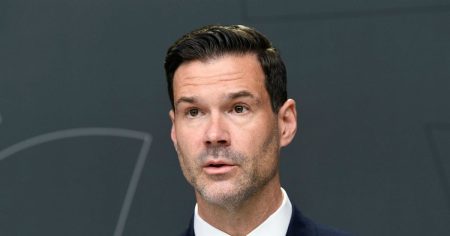The Looming Threat: NATO’s Urgent Call for Increased Defense Spending
NATO Secretary General Jens Stoltenberg, in a stark warning delivered on Thursday, emphasized the gravity of the escalating threat posed by Russia. Stoltenberg’s address painted a picture of a Russia preparing for a protracted confrontation with the West, a conflict that necessitates a significant and immediate increase in defense spending by NATO member states. He expressed concern that the alliance, while not currently under direct threat, is ill-equipped to handle the challenges anticipated in the coming years. This assessment, he suggested, is based on intelligence information pointing to Russia’s potential to rebuild its military capabilities should the conflict in Ukraine reach a stalemate or frozen state. This pause, Stoltenberg warned, would provide Russia with the opportunity to regroup and rearm, posing a renewed and potentially more formidable threat to the alliance in the foreseeable future.
Stoltenberg’s warning is not merely a projection of future possibilities; it is rooted in the observable reality of Russia’s current actions. Stoltenberg highlighted the rapid pace of Russia’s military buildup, a pace that has significantly exceeded NATO’s initial estimations. This accelerated rearmament, facilitated by Russia’s shift to a wartime economy, underscores the urgency of the situation and the need for swift and decisive action by the alliance. Stoltenberg likened the current threat level to that experienced during the Cold War, a period when defense budgets routinely exceeded three percent of GDP. He stressed the incongruity of current defense spending levels, which are significantly lower than those maintained during the Cold War despite a comparable, if not greater, threat to security. This discrepancy, he argued, needs immediate rectification.
The call for increased defense spending is not merely directed at governments; it extends to the broader societal and economic landscape. Stoltenberg urged a concerted effort involving governments, private industries, and even individual citizens to "turbocharge" the production of defense materials. He encouraged public engagement, advocating for citizens to pressure financial institutions, such as banks and pension funds, to prioritize investment in the defense industry. The rationale behind this comprehensive approach is clear: preventative measures, though costly in the short term, are ultimately more economical than engaging in a full-fledged conflict. The message is stark: invest now or pay a far greater price later.
Katarina Engberg, a security policy analyst at the Swedish Institute for European Policy Studies, corroborates Stoltenberg’s concerns, suggesting that his pronouncements are likely based on credible intelligence assessments. Engberg echoes the concern about a potential freeze in the Ukrainian conflict, providing Russia with the breathing room to rebuild its military strength. She interprets Stoltenberg’s public pronouncements as a strategic move to initiate a dialogue within NATO regarding the need to raise the minimum defense spending target. The current requirement of two percent of GDP is met by 23 out of 32 members, but Stoltenberg, and increasingly other leaders within the alliance, argue that this is insufficient given the evolving security landscape. Engberg anticipates that this discussion could culminate in a formal increase of the target to three percent at the next NATO summit, bringing it closer to Cold War levels.
Engberg also notes the potential political implications of Stoltenberg’s statement, particularly in the context of transatlantic relations. She suggests that the message is partly directed towards the United States, where figures like former President Donald Trump have consistently criticized NATO members for failing to meet the two-percent GDP target. By advocating for increased defense spending, Stoltenberg aims to demonstrate the alliance’s commitment to shared responsibility and dispel accusations of free-riding on American military might. This preemptive move could serve to strengthen the alliance’s internal cohesion and reinforce transatlantic partnerships in the face of a common threat.
In conclusion, Stoltenberg’s warning serves as a wake-up call for NATO and its member states. The threat from Russia is not a distant prospect; it is a clear and present danger requiring immediate and decisive action. Increased defense spending is not merely a budgetary concern; it is an investment in collective security and a necessary step to deter potential aggression and maintain peace and stability in the region. The urgency of the situation demands a concerted effort from governments, industries, and citizens alike, recognizing that the cost of inaction far outweighs the investment required to strengthen the alliance’s defenses.














